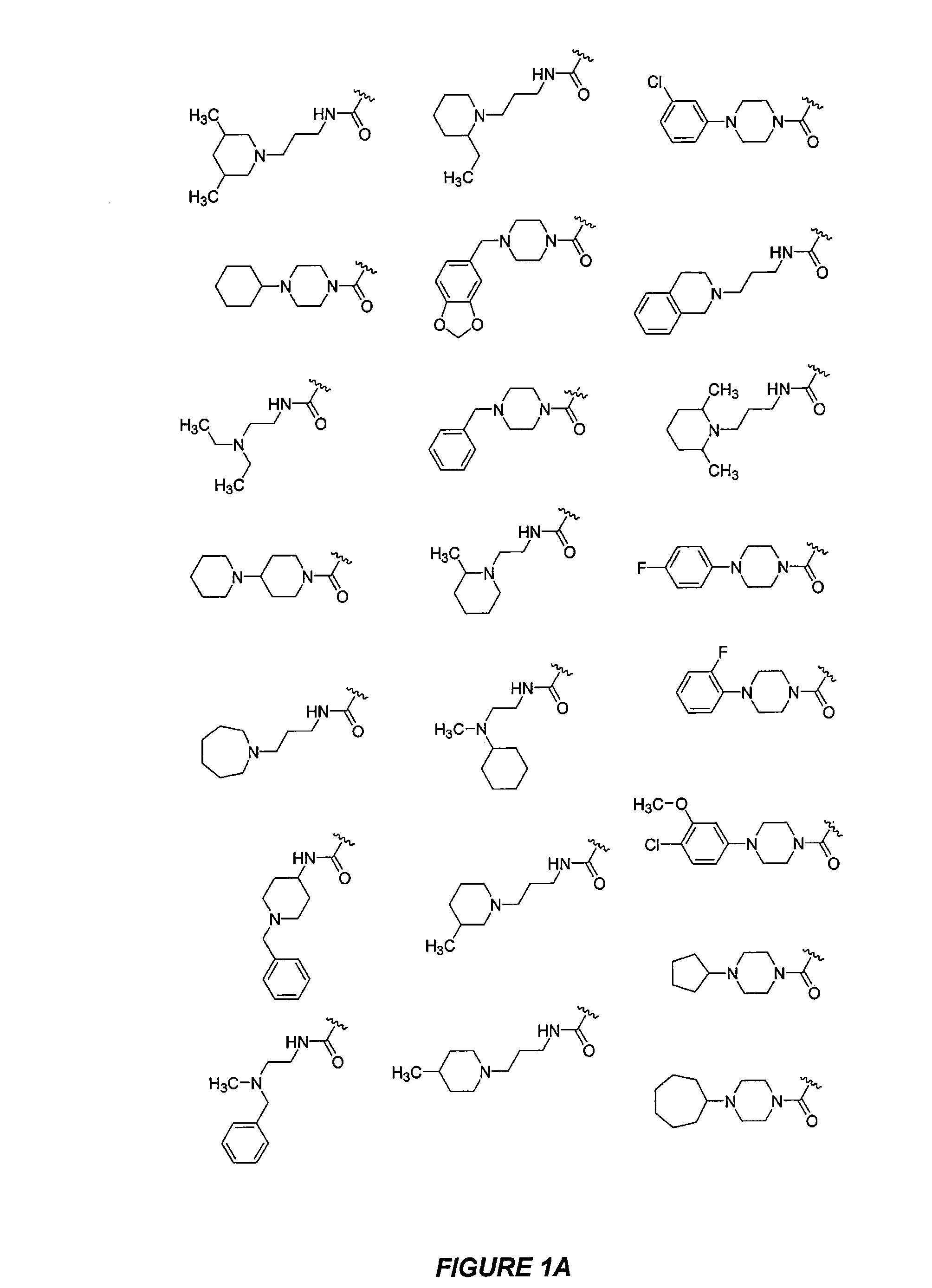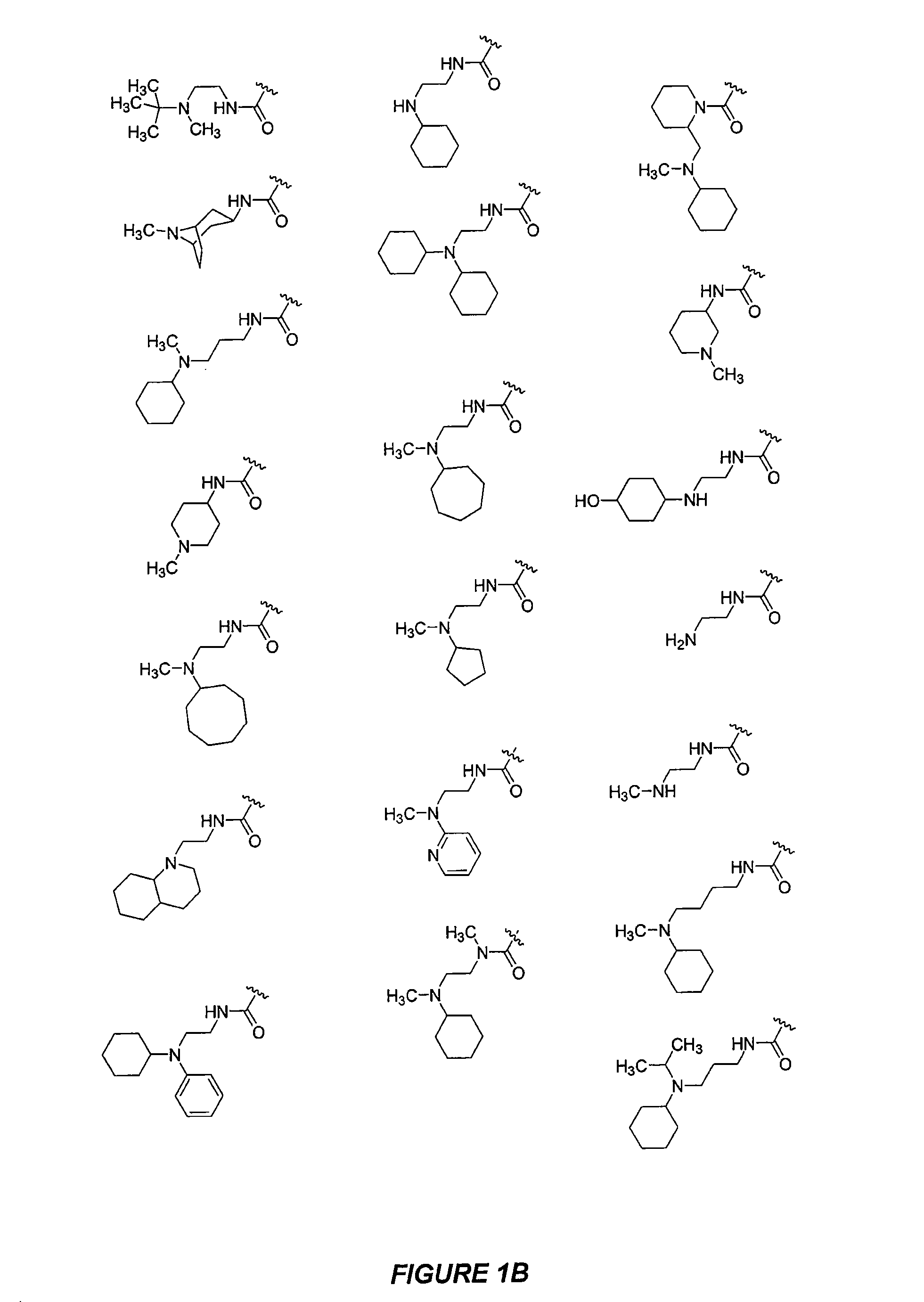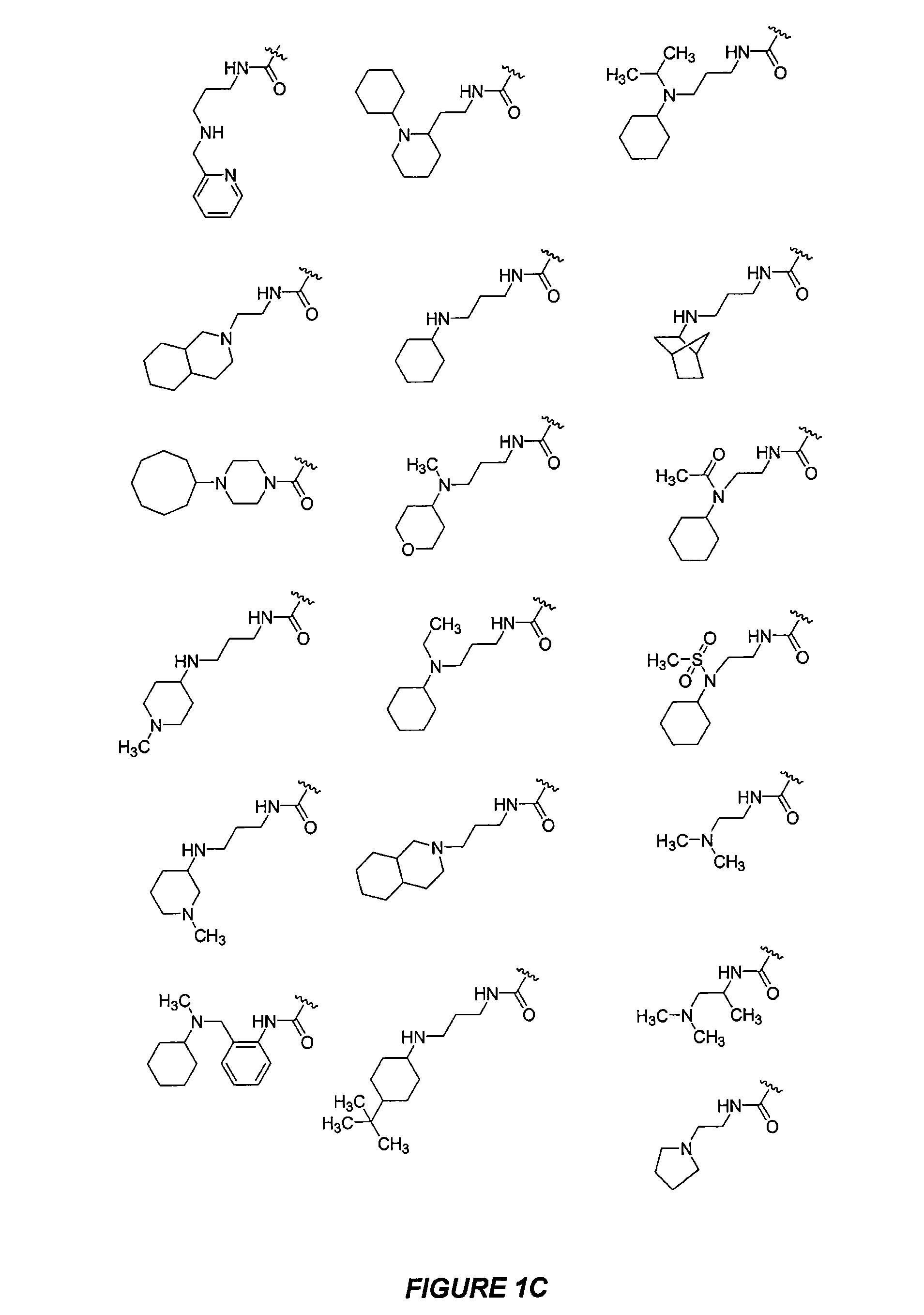CXCR4 modulators
a modulator and cxcr4 technology, applied in the field of cxcr4 modulators, can solve the problems of partial reduction of tumor load, inconclusive bertolini and colleagues studies, and increased survival rate, and reduce tumor load
- Summary
- Abstract
- Description
- Claims
- Application Information
AI Technical Summary
Benefits of technology
Problems solved by technology
Method used
Image
Examples
example 1
Synthesis of N-[2-(cyclohexylmethylamino)-ethyl]-2-(8-Methyl-4H chromeno[4,3-C]pyrazol-1-yl)-acetamide (e)
[0152]
[0153] Preparation of 3-Dimethylaminomethylene-6-methyl-chroman-4-one (b): To a solution of the 6-methyl-chroman-4-one (a, 1 g, 6.16 mmol) was added DMF acetal (0.737 g, 6.16 mmol) in dry toluene (20 mL) at rt. The reaction mixture was then refluxed for 4 h under nitrogen atmosphere. After completion of the reaction, the excess solvent was removed in vacuo and the residue b was used as such without further purification: LC MS (Method B): 218 (M+1).
[0154] Preparation of (8-Methyl-4H-chromeno[4,3-c]pyrazol-1-yl)-acetic acid ethyl ester (c): A solution of crude 3-Dimethylaminomethylene-6-methyl-chroman-4-one b (1.34 g, 6.16 mmol), ethyl hydrazinoacetate hydrochloride (0.95 g, 6.16 mmol), and a catalytic amount of acetic acid were heated at refluxed in absolute ethanol (10 mL) for overnight. The reaction mixture was concentrated and the residue was purified by column chromat...
example 2
Synthesis of N-[2-(cyclohexylmethylamino)-ethyl]-2-(8-Methyl-4-oxo-4H-chromeno[4,3-C]pyrazol-1-yl)-acetamide (i)
[0157]
[0158] Preparation of (8-Methyl-4-oxo-4H-chromeno[4,3-C]pyrazol-1-yl)-acetic acid ethyl ester (g): A mixture of 3-formyl-4-chloro-6-methylcoumarin f (2.2 g, 10 mmol), hydrazine (10 mmol), and a catalytic amount of acetic acid was heated in absolute ethanol (20 mL) at refluxed for 2 h. The reaction mixture was cooled to rt which resulted in the precipitation of g. The product g was filtered, washed with ethanol and used directly in the next reaction without further purification: LC MS (Method B): 287 (M+1).
[0159] Preparation of 1-Carboxymethyl-5-(2-hydroxy-5-methyl-phenyl)-1H-pyrazole-4-carboxylic acid (h): To a solution of (8-Methyl-4-oxo-4H-chromeno[4,3-C]pyrazol-1-yl)-acetic acid ethyl ester g (1 mmol, 286 mg) in THF (4 mL) was added 1M aq. LiOH (2 mL, 2 mmol) was added and the resultant mixture was stirred for 2 h at rt. The reaction mixture was neutralized with...
example 3
Synthesis of N-[2-(cyclohexylmethylamino)-ethyl]-2-(5,8-dimethyl-4-oxo-4,5-dihydropyrazolo[4,3-C]quinolin-1-yl)-acetamide (q)
[0161]
[0162] Preparation of 3-Dimethylamino-2-(5-methyl-2-nitro-benzoyl)-acrylic acid ethyl ester (k): A mixture of the ketoester j (2.51 g, 10 mmol) and dimethoxymethyl-dimethyl-amine (12 mmol) was refluxed in dry toluene for 2 h. The excess solvent was removed in vacuum and the residue was used without further purification: LC MS (Method B): 307 (M+1).
[0163] Preparation of 1-Ethoxycarbonylmethyl-5-(4-methyl-2-nitro-phenyl)-1H-pyrazole-4-carboxylic acid ethyl ester (1): The above crude 3-dimethylamino-2-(5-methyl-2-nitro-benzoyl)-acrylic acid ethyl ester j (3.06 g, 10 mmol) and the hydrazino-acetic acid ethyl ester hydro chloride (1.64 g, 10 mmol) were refluxed in absolute ethanol containing catalytic amount of acetic acid for 8 h. The reaction mixture was cooled and concentrated in vacuo. The residue was purified by column chromatography to provide pure co...
PUM
 Login to View More
Login to View More Abstract
Description
Claims
Application Information
 Login to View More
Login to View More - R&D
- Intellectual Property
- Life Sciences
- Materials
- Tech Scout
- Unparalleled Data Quality
- Higher Quality Content
- 60% Fewer Hallucinations
Browse by: Latest US Patents, China's latest patents, Technical Efficacy Thesaurus, Application Domain, Technology Topic, Popular Technical Reports.
© 2025 PatSnap. All rights reserved.Legal|Privacy policy|Modern Slavery Act Transparency Statement|Sitemap|About US| Contact US: help@patsnap.com



